11 Best Paprika Substitute Options: Your Complete Guide to Paprika
As a unique and robust spice with over 12 varieties, learn all there is to know about paprika and which paprika substitute will work best for your recipes.

Described as a Hungarian spice with Mexican roots, paprika brightens up bland dishes and brings all types of cuisines to life. Paprika powder is the final touch on deviled eggs and hummus. It’s the slightly earthy, sweet, and bitter flavor in goulash, spice rubs, marinades, and curries. Heck, paprika even brightens up the vibrant orange hue of a mouthwatering homemade mac-and-cheese sauce.
As a unique and robust spice, you may wonder what to substitute for paprika to achieve a similar flavor and/or color in your recipes. The important thing to know when substituting for paprika is that there are said to be at least a dozen varieties of this spice.
While all types of paprika hail from dried and ground red capsicum (pepper), they don’t all taste and look the same. The taste and color of paprika will depend on where it’s from and what type of red pepper is used. For example, you may find some recipes call for “hot paprika” while others call for “smoked paprika” or just “paprika.”
With that said, this list of paprika substitutes is for the most common types of paprika—smoked paprika, Hungarian sweet paprika, and what chefs call “regular” or “basic” paprika. You will most likely find this type of paprika at the grocery store. On the spice label, it will simply say “paprika.”
What’s the Flavor Profile of Paprika? (And the Three Most Common Types)
What do you get when you put red capsicums in the dehydrator (or sun-dry them) and grind them into a powder? Pa-pa-pa-prika! Since red peppers aren’t hot or spicy but mildly sweet, most types of paprika will have a sweet base.
However, there are many different types of red peppers around the world. Depending on the type of paprika used and its origin, paprika’s flavor profile can range between warm, mild, smoky, sharp, pungent, and spicy. The paprika color can be bright red, orange, or a deep, dark red.
Due to the varying flavors and colors, it’s not always a good idea to substitute one type of paprika for another (such as replacing sweet paprika with smoked paprika). Doing so could completely alter the taste of your dish.
Before we discuss the best paprika substitutes for your spice rack, let’s examine the most common types of paprika, their taste, and their uses. Familiarizing yourself with the different varieties of paprika will help you succeed when making recipe substitutions.
Regular Paprika
Regular or “basic” paprika is the most common form of paprika. Made from the skin and flesh of sweet red peppers, it has a mild taste and doesn’t pack any heat or spice. This makes it safe to use and experiment with different recipes, as it won’t overpower dishes with a pungent taste.
Regular paprika is bright red in color. For this reason, it’s generally used to enhance the color of bland-looking dishes, such as deviled eggs, potato salad, hummus, or a mac-and-cheese sauce. You can also use it in red curries.
If your recipe simply calls for “paprika,” this would be the variety it’s referring to.
Smoked Paprika (AKA Spanish Smoked Paprika or Pimentón)

With Mexican roots, smoked paprika or pimentón is made from peppers that have been smoked over an oak fire and ground into a powder. Smoked paprika has a deep red hue and a potent smoky flavor. It’s more full-bodied and flavorful than regular paprika.
Smoked paprika is commonly found in Spanish dishes, such as paella. It also deepens the flavor of a chicken spice rub and beef or veggie taco seasoning. Since smoked paprika originated in Mexico, it is used abundantly in Mexican cuisine, infusing smokiness into salsa and Mexican rice dishes.
Smoked paprika is sometimes labeled as Spanish smoked paprika and has different heat levels: Picante (hot), agridulce (semi-hot), and dulce (mild).
Important to know: If your recipe intends a smoky flavor, be sure to read the label on Spanish paprika. Make sure it says “smoked.” Confusingly, some varieties of Spanish paprika use dried peppers instead of smoked peppers, which means they won’t have the signature smoky taste.
Hungarian Paprika (Or Hungarian Sweet Paprika)
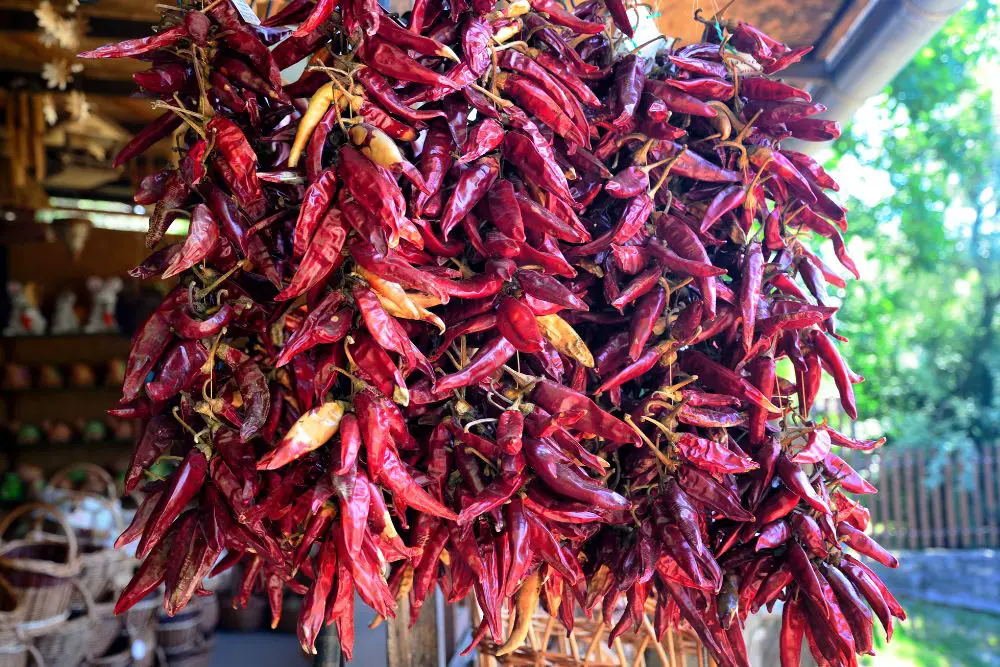
Can you believe there are at least eight varieties of Hungarian paprika alone? As Hungary’s national spice, paprika is used liberally in traditional Hungarian dishes such as goulash.
The most common type of Hungarian paprika—and the version you’re most likely to find outside of Hungary—is called “édesnemes,” It may also be labeled “Noble sweet,” “sweet paprika,” or “sweet Hungarian paprika.”
Although not spicy, Hungarian sweet paprika is more pungent than smoked paprika. It is bright red in color and is described as having a sharp pepper flavor with a hint of sweetness.
Since several varieties of Hungarian paprika exist, varying in heat and flavor profiles, you’ll want to pay close attention to labels and how they may impact the flavor of the recipes you’re using them in.
Top 8 Paprika Substitute Options
1. Ancho Chili Powder
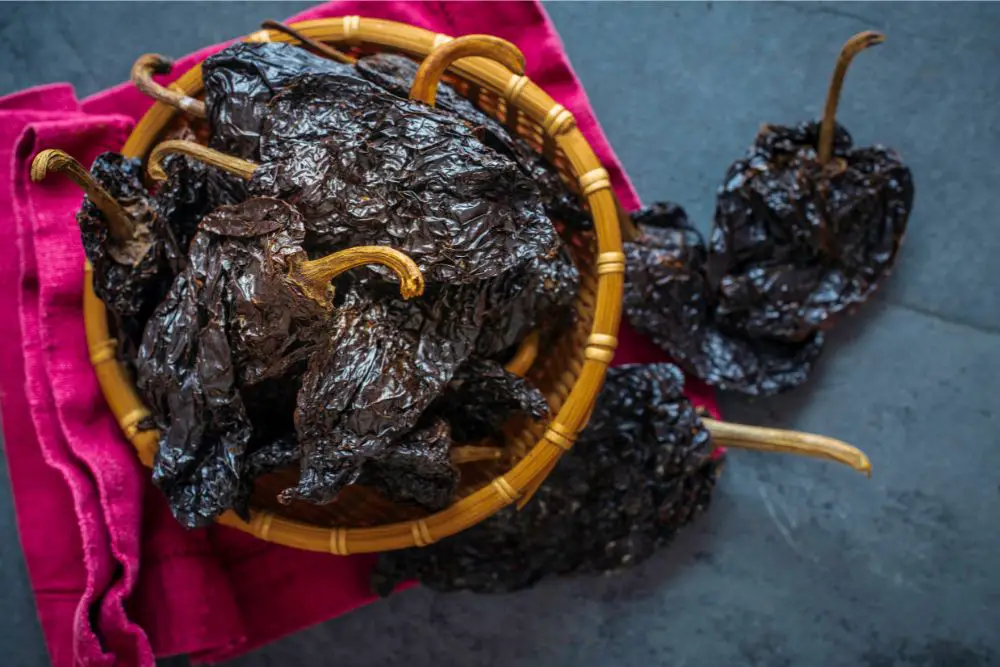
What to know: If your recipe calls for regular paprika, ancho chili powder is your best bet for achieving a similar taste and deep red color.
Ancho powder is made from ground ancho chilis (which are dried and roasted poblano peppers). They have a deep red color and a slightly sweet, smoky, mild flavor. For this reason, ancho chili powder could also work in place of mild or dulce Spanish smoked paprika.
Also, be sure not to confuse ancho chili powder with regular chili powder, usually a blend of cumin, oregano, chili peppers, paprika, and garlic. More on that in a moment.
How to substitute: Use ½ to one teaspoon of ancho chili powder for one teaspoon of paprika.
2. Cayenne Pepper Powder
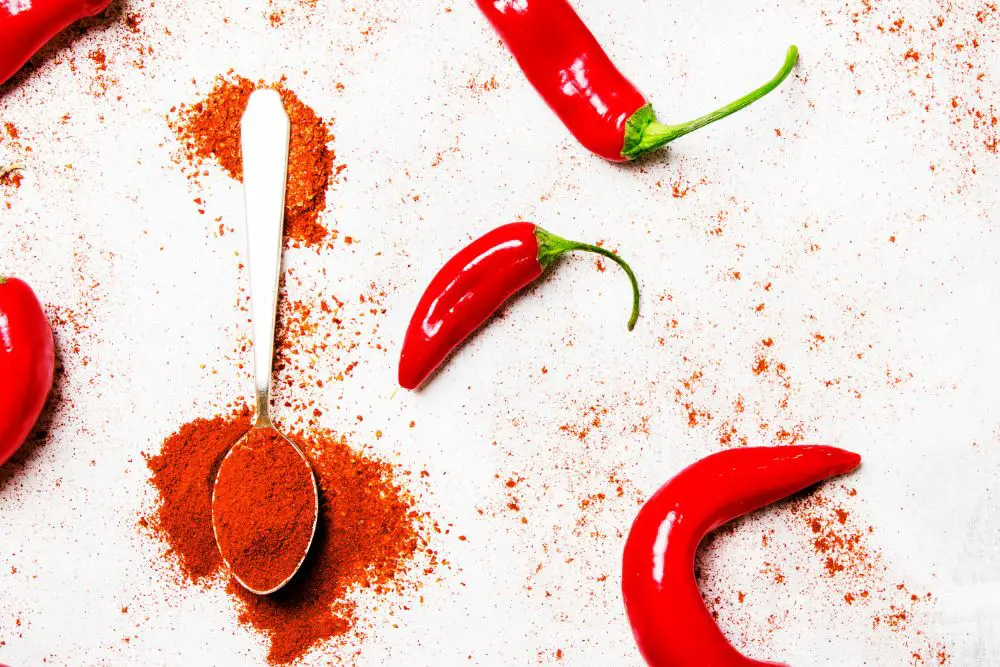
What to know: If you’re looking for a common spice with a similar color to paprika—but a generous jump in heat—cayenne powder will do the trick. However, note that cayenne pepper powder is extremely spicy, while regular paprika is mild. Always start with a very small amount of cayenne pepper and adjust to achieve the desired spiciness.
Cayenne pepper could also work as a picante smoked paprika substitute and for the other hotter varieties of paprika.
How to substitute: Start with ¼ or ½ teaspoon of cayenne pepper for one teaspoon of paprika until your desired flavor and heat level is reached.
3. Chili Powder
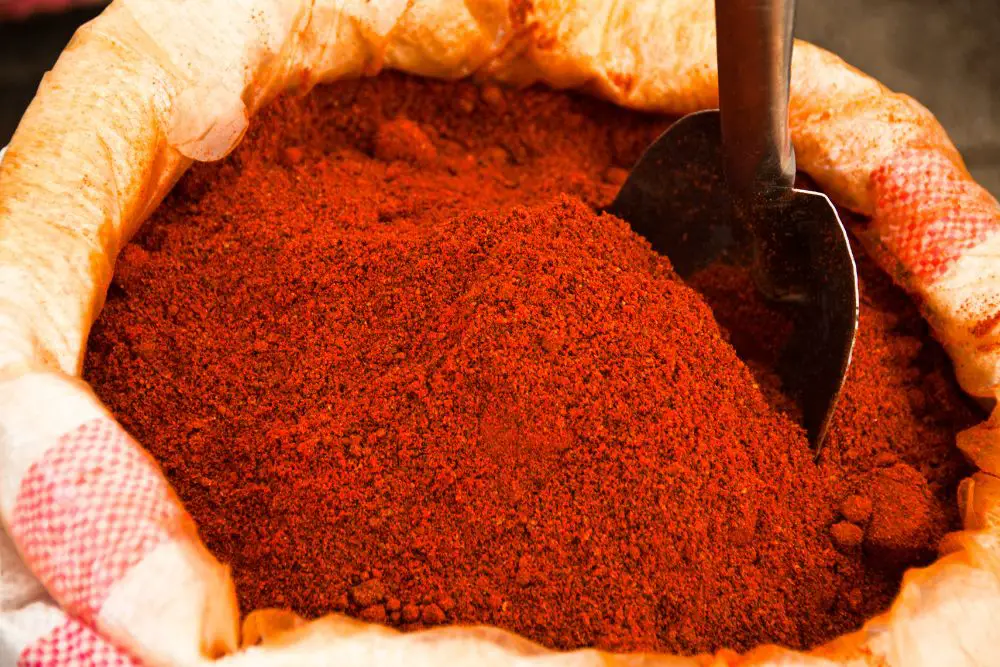
What to know: Chili powder is a blend of spices and chilis (such as ancho chili, jalapeño, cumin, garlic powder, paprika, cayenne pepper, and/or onion powder).
As a blend, it combines different flavor profiles, such as earthy, spicy, and savory. With the addition of cayenne, chili powder also has a greater heat level than regular paprika but could be comparable to a hot or semi-hot smoked or Hungarian paprika.
For this reason, chili powder is not a direct substitute for paprika but will still work if you’re in a paprika pinch—especially if you only need a dash for a kick of flavor and color (e.g., deviled eggs, hummus, or curries).
How to substitute: Due to the differences in flavor between paprika and chili powder, let your tastebuds guide you and start with a small amount (for example, ¼ teaspoon of chili powder for one teaspoon of paprika and work your way up from there).
4. Aleppo Chili Powder

What to know: Aleppo chili powder isn’t the most common spice in your cupboard, but if you have it, it will work as a paprika substitute. Aleppo chili powder is commonly used in Middle Eastern and Mediterranean cuisine to season meat, dips, salads, and beans.
Aleppo chili powder has an earthy taste, moderate heat level, and dark burgundy color. It can taste slightly salty (salt is often added during the drying process), and its use in recipes is compared to that of crushed red pepper.
How to substitute: Since Aleppo chili has a higher heat level than regular paprika, it would make the best direct substitute for a hotter variety of paprika. When substituting for regular paprika, use small amounts (start with ¼ teaspoon) and adjust to taste.
5. Chipotle Powder

What to know: Chipotle powder is spicy instead of sweet. If your paprika recipe can work with a hotter Tex-Mex flavor, it can be a good substitute for regular or smoked paprika.
Chipotle powder (made from smoke-dried jalapeños) has a smoky taste but is earthier with a higher heat than regular, hot smoked paprika.
For context, hot paprika is usually no more than 500 Scoville heat units, while chipotle powder can reach the 8,000 range on the Scoville scale (a scale that ranks the spiciness of chili peppers).
Chipotle powder is also a deeper red than paprika, without the brightness regular or Hungarian paprika can offer—so it may also alter the color of your recipe.
How to substitute: Due to the difference in heat level, start with ¼ teaspoon of chipotle powder for every teaspoon of paprika and adjust to taste. If you’re confident in the spice level, replace one teaspoon of paprika with one teaspoon of chipotle powder.
6. Cumin Combined with Regular Paprika and Cayenne for Smoked Paprika

What to know: If your taco seasoning or marinade calls for smoked paprika, and if you have cumin, cayenne, and regular or sweet paprika on hand, you can create a similar taste.
How to substitute: Combine a pinch of regular paprika, cumin, and a small dash of cayenne to turn up the heat. Adjust to taste.
7. Hot Sauce or Tomato Sauce
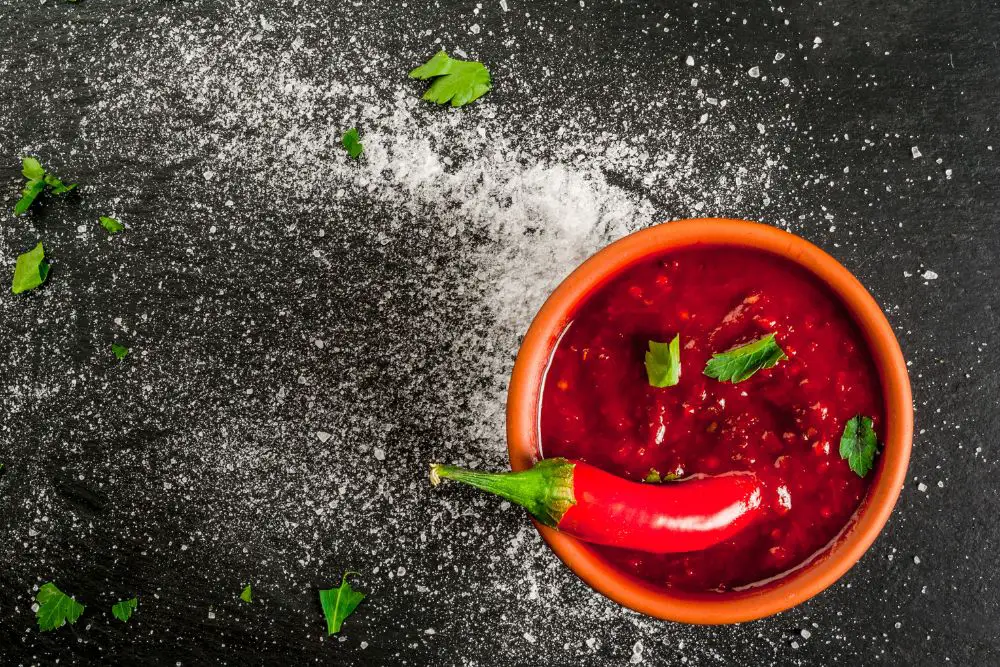
What to know: You can use hot sauce or tomato sauce as a paprika substitute if your dish requires a deep red color and a touch of heat. Hot sauce would work best as a smoked or hot paprika substitute, while tomato sauce would work as a sweet or regular paprika substitute.
How to substitute: Use one teaspoon of hot sauce for one teaspoon of paprika.
Start with two tablespoons for one teaspoon of paprika for the tomato sauce and gradually increase to reach the desired color.
8. Cajun Spice
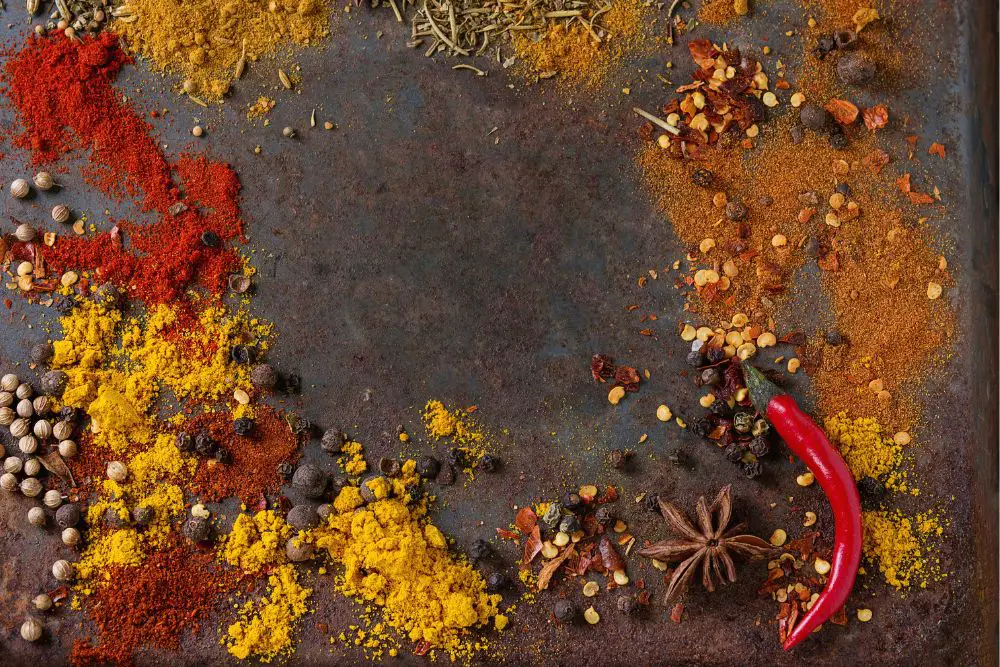
What to know: Cajun spice or Cajun seasoning is typically a blend of spices such as cayenne pepper, garlic powder, onion powder, black pepper, white pepper, oregano, thyme, and/or red pepper flakes—with some varieties containing regular or smoked paprika. Cajun spice has more of an orange hue, so it won’t offer the bright or deep red color of paprika to your recipe.
Since Cajun spice is more savory than hot spices, it’s not as spicy as cayenne pepper and can work as a substitute for smoked or regular paprika.
How to substitute: Use one teaspoon of Cajun spice for one teaspoon of paprika.
3 Less Common Paprika Substitutes That Can Still Work
While the five options above are your top bets for paprika substitutes, there are a few other spices you can try out.
1. Guajillo Chili Powder

Guajillo chili powder is a slightly hotter version of the number one paprika substitute: ancho chili powder. Guajillo chili is a mild-hot pepper powder with smoky notes and is one of Mexico’s most popular chili peppers.
2. Crushed Red Pepper Flakes
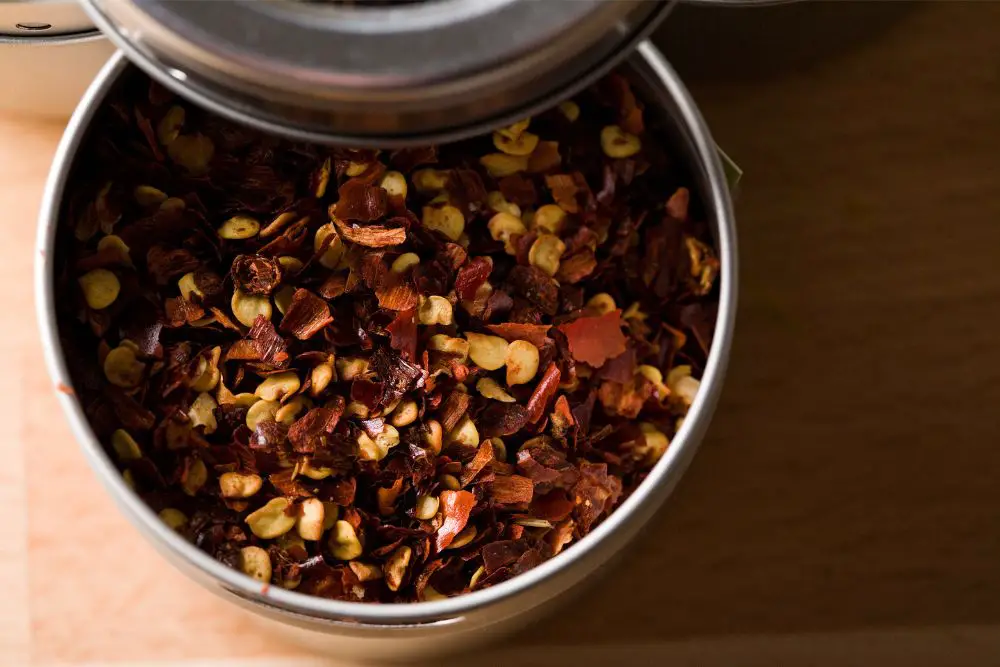
Red pepper flakes are dried spicy red peppers with a smoky taste, so they’ll make a better substitute for the hotter and smoked varieties of paprika in terms of taste.
However, crushed red pepper flakes aren’t finely ground like paprika; they have a different color and may change your dish’s appearance. An instance where crushed red pepper flakes could be an ideal substitute is something simple like hummus or a Mediterranean salad, where the color and heat levels can be changed without drastically altering the desired taste or appearance of the dish.
3. Black Pepper

If your recipe isn’t dependent on the vibrant red hue of paprika, you can use equal amounts of black pepper for spice and flavor. The recipes that would work best for substituting black pepper for paprika would be curries, spice rubs, and marinades.
The Takeaway
Paprika is a unique spice that comes in dozens of varieties, each with a different color, spice level, or sweetness. Understanding the most common types will allow you to choose the best paprika substitute(s) without dramatically changing the appearance or flavor of your dish.
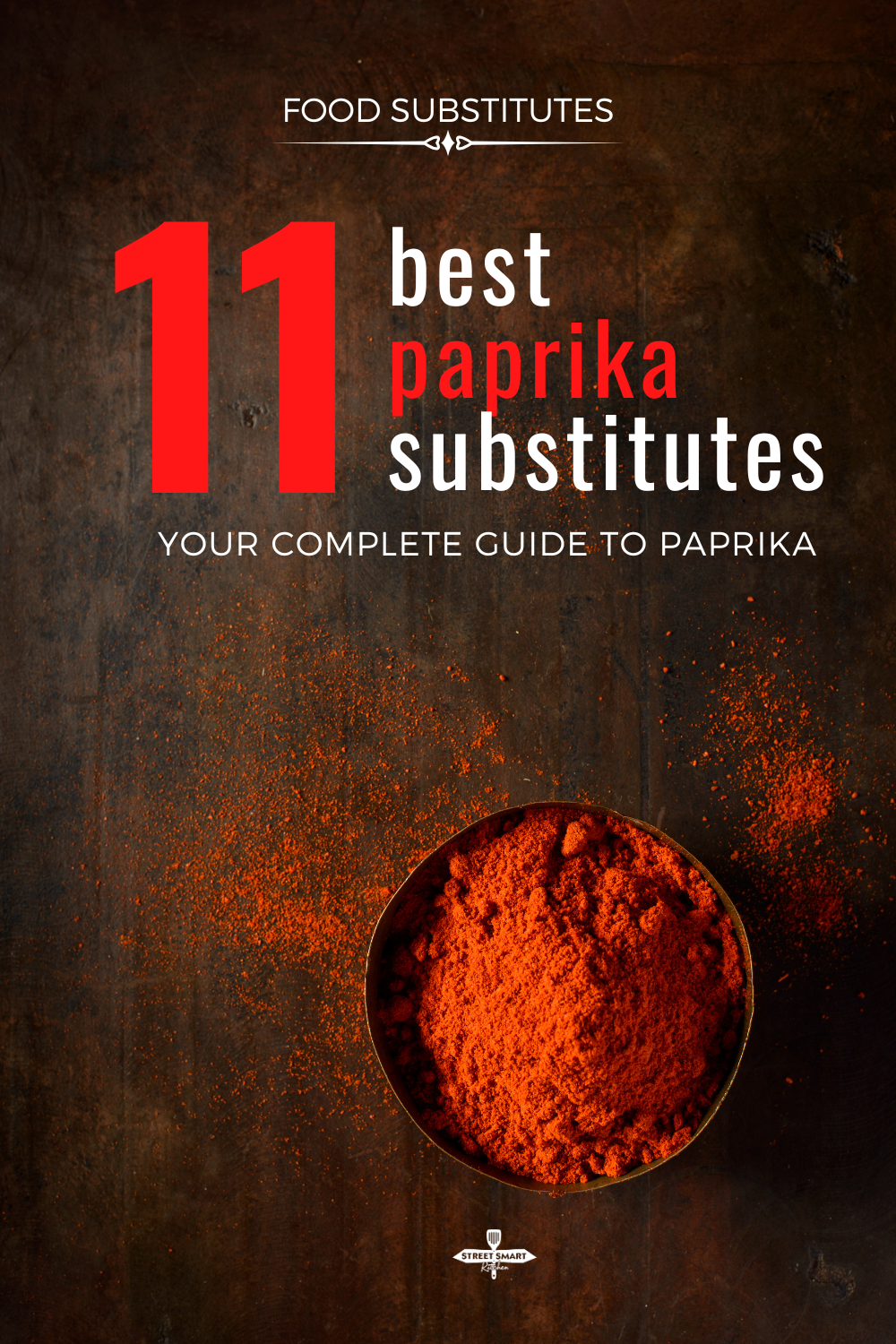
About the Author
Sharon Chen is an Integrative Nutrition Health Coach and author of the Complete Sous Vide Cookbook. She believes food not only brings healing but also connection. As the creator of StreetSmart Kitchen, she aims to make meal prep easier than ever and help you find balance, ease, joy, and simplicity in the kitchen as you improve your well-being.


